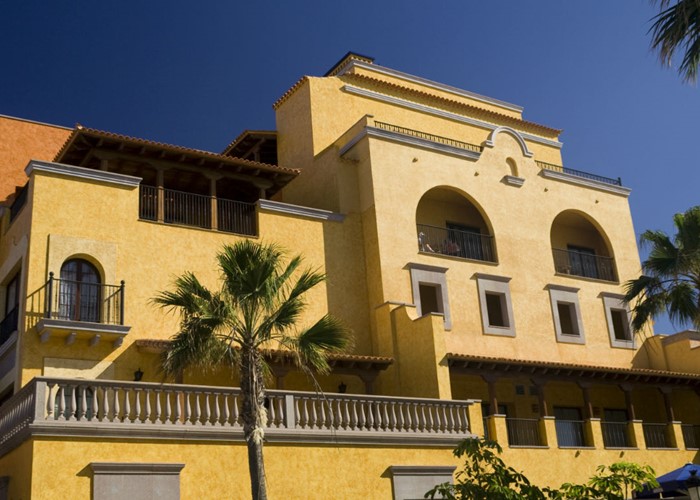For the past three years, Spain's property market has been going relentlessly backwards, with prices falling for 36 months in a row. But it's now showing the first signs of recovery after five years of pain. So is it a good time to find your very own place in the sun?
The Costa crash
Northern Europeans have been keenly hunting homes across the Spanish mainland and islands since the 1960s. Rich Brits, Germans and Scandinavians bought bargain villas and apartments in order to take advantage of the famed sun, sand and sangria.
However, when the global financial crisis hit in 2008, Spain's highly inflated property bubble burst. In the worst-hit regions, property prices have more than halved, with prices falling 50% or more. On average, home values have fallen by more than a third (36%) since peaking in April 2007.
However, a small glimmer of hope appeared this week. In January, prices were largely unchanged, according to the latest survey conducted by Spanish property website Fotocasa.es and IESE Business School.
As reported on Bloomberg business news, the average price of a Spanish residence last month was €1,890 (£1,631) a square metre. In December, this figure was just €1 more, so this might just mark the beginning of the end of the Spanish property slump. Even so, the yearly decline in prices was nearly a tenth (9.9%) – far worse than anything we've seen here in the UK since 2009.
Cheap places in the sun...
One problem for prospective British buyers is that Spain currently has a two-tier property market. There are the prices you see advertised by estate agents and property developers, and then there are the true prices from sales, which often take place at discounts of up to a quarter (25%) off 'official' prices.
In other words, this is the sort of buyers' market where bargain hunters thrive, snapping up premium properties at bargain-basement prices. This is especially the case in such a stagnant market, where a near-total lack of selling activity means that prices are purely guidelines.
For example, some Spanish banks have been off-loading repossessed (seized) properties at discounts of 60% to 70% from original purchase prices. With such deep markdowns on offer, there should be no need to rush into buying, especially if prices continue to weaken this year.
...but there could be more pain to come
While the arguments for investing in post-crash Spanish property are growing, only fools would rush in to this bombed-out sector without doing their homework first.
Indeed, one leading economic consultancy in Spain, RR. de Acuña & Asociados, warned last December that the Spanish property slump could continue for another 10 to 15 years. The firm expects prices in major cities to fall a further 30% by 2018, while popular coastal regions could see prices halving from their current levels.
This would be a disaster for the estimated 400,000 Brits who already live in or own homes in Spain, some of whom might see their homes fall in value by three-quarters (75%) from peak to trough.
In a strongly worded report, RR. de Acuña & Asociados warned that "The [Spanish property] market is broken," because there are close to two million properties awaiting sale. This unsold stock breaks down as follows:
|
Used homes on the market |
800,000 |
|
Completed development units |
700,000 |
|
Foreclosures |
300,000 |
|
In foreclosure proceedings |
150,000 |
|
Under construction |
250,000 |
|
Total |
2.2 million |
Of course, classical economic theory tells us that when supply greatly exceeds demand, prices can go only one way: downwards. With a massive glut of 2.2 million unsold homes and only 200,000 to 250,000 properties changing hands each year, Spain has a property overhang that could take a decade to clear.
In this scenario, there is simply no way that the Spanish market can gain any upwards momentum. What's far more likely is that prices will resume their downward slide, before levelling off when Spain's economy finally starts to show sustained strength
The true picture: Spain in numbers
To show you how dangerous it could be to bet on Spanish property right now, I've pulled together some stats on the state of Spain (and the UK) today. As you can see from my table below, there are plenty of problems for property investors to worry about.
|
Country |
Spain |
UK |
|
Population |
48 million |
62 million |
|
Yearly property sales |
200,000 |
900,000 |
|
Unemployment rate |
26.6% |
7.8% |
|
Youth unemployment rate |
56.5% |
20.2% |
|
Economic growth (2012) |
-1.8% |
0% |
|
Predicted growth (2013) |
-1.3% |
0.7% |
As you can see, the UK economy was flat in 2012 and is expected to grow slightly this year. Alas, Spain is still firmly in recession, with its economy expected to keep shrinking until 2014. Also, with unemployment running at more than three times the UK's rate of 7.8% and youth unemployment at record high, there seems to be no light at the end of the tunnel for Spain just yet.
What's more, with Spain's 'zombie' banks and property developers locked in a 'death spiral' of fire sales, write-downs, bad debts and defaults, there is no reason to expect any lasting property recovery in the immediate future.
In summary, while property prices in Spain are well below their former highs, they could yet have further to fall. So this is a market only for the brave, foolhardy or risk-hungry!
